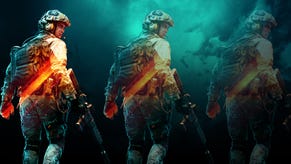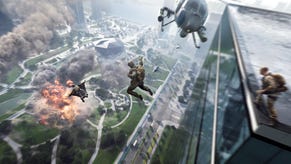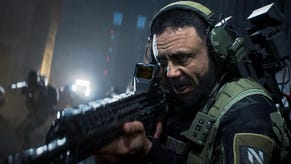Battlefield 5's use of GeForce RTX's ray tracing is the real deal, but it comes at a cost
As the Battlefield 5 open beta begins, most players are keen to test out its refined combat - but I'm looking at it and longing wistfully for an Nvidia RTX 2080.
A couple of weeks ago I got to attend the launch event for the Nvidia RTX series graphics cards. That's the GeForce RTX 2070, RTX 2080 and RTX 2080Ti. These new cards represent the next big step for Nvidia in graphics technology on PC and will surely eventually influence where consoles go too - but interestingly the focus is more on realism in certain specific visual areas over resolution.
Of all the games supporting the new technology in the RTX 20-series cards, for my money Battlefield 5 is the current flagship game for Nvidia's new GPUs and their ray tracing technology. The 20 series cards are indeed more powerful and more capable in general use than those that came before them - and we'll be reporting on exactly to what degree soon with benchmarks and other tests - but the big new selling point is ray tracing, to the point that this new tech is where the cards get their RTX moniker as opposed to the well-worn GTX brand.
First things first - it's highly recommended you have a watch of some of the video above, which is in-game footage of Battlefield 5 running on an Nvidia RTX 2080Ti card with ray tracing enabled alongside me talking a little about why it's special. In Battlefield 5 ray tracing is used to render the specular reflections, replacing the more static, faked reflections created using techniques like cube maps and screen-space reflections. Getting away from the techy stuff, in real terms this results in more realistic-looking reflections on shiny surfaces, as showcased in the demo above.
Screen-space reflections have a laundry list of limitations, and cube maps are as basic as they come. By comparison, ray traced reflections are more realistic and, to put it bluntly, more correct to real-life. The term ray tracing is named as such for the process of literally tracing a ray of light as it bounces around the room - and this doesn't just lead to a higher fidelity, but also actual reflections that haven't typically been possible in games at all. One change that sounds small on paper but is far more significant in practice is the ability for ray tracing to show reflections of items that are off-screen. This means you can theoretically see a real-time reflection from around a corner - something just not possible with the systems commonplace in games today.
This means that you might see somebody coming around a corner ahead of you reflected in the door of a parked car, for instance, or see a full, accurate reflection of your player character's model in things like shop windows or puddles. On the environment side, the reflection in a window will properly and accurately represent the environment it's reflecting in real time - so as a building crumbles under Battlefield's intense damage modelling, the destruction will be reflected in real-time rather than in 'stages' of damage via cube maps.
This technology even extends to stuff handled by the CPU like particle effects for fire and smoke. All of these reflections are also cleaner and sharper than their cube mapped or SSR counterparts. These sound like buzzwords, but when you see it in action it becomes clear that these small changes add up to something far more significant. Ray tracing ends up having more than the sum of its parts' impact on the experience, at least in Battlefield 5.
There are catches, of course. Battlefield 5 as demoed to us with ray tracing features a variety of clever tricks and optimizations in order to make the technology work, as even on the Nvidia GeForce RTX 20 series cards with their dedicated ray tracing hardware acceleration would find doing entirely realistic ray tracing impossible. This is technology that up until now has been reserved for the highest-end pre-rendered computer graphics, mind, so to get any real-time implementation of it, even one with caveats and smoke and mirrors, is a significant visual improvement.
The biggest catch is the resolution and potential performance, as I hinted in the opening of this article. In the demo I saw, Battlefield 5 is shooting to keep you above 60 frames-per-second at 1080p on a GeForce RTX 2080Ti with ray tracing enabled. The game managed this perfectly well and looked great - though cranking the resolution up to 1440p or even 4K is sure to see the game drop quite a bit. This is on the highest-end of the the RTX 20 series cards as well - so questions are raised about the lesser releases, which still have dedicated ray tracing hardware acceleration but to a less powerful degree.
For now it seems players will be forced to make a choice between the improved visual flair and realism offered by ray tracing and a higher resolution, though this is only a first generation of the technology both on the hardware side and in-engine - and one hopes some compromises can be made to reach a middle ground where higher resolutions and improved lighting and reflections will be available at once - or you can make the choice to lower the resolution to get the full ray tracing treatment.
Different games will use the RTX ray tracing engine in different ways, too - Battlefield 5 is all about the reflections, but I also saw impressive demos of other games including a Shadow of the Tomb Raider demo that used the technology to cast softer, more natural shadows and a demo of Metro: Exodus that uses it to impressive effect to ramp up the atmospheric lighting. Remedy's Control uses it to improve lighting but also offer up another great example of how it can be used as a game-changer for in-game reflections.
The Battlefield 5 beta is on now and the game is out in November. The Nvidia GeForce RTX 2080 and 2080Ti launch later this month - and we'll have full tests, benchmarks and comparisons of the cards and ray tracing in action before then. Stay tuned.








